OLED displays use organic materials that emit light when electricity is applied. OLEDs enable emissive, bright, thin, flexible and efficient displays. OLEDs are replacing LCD displays in mobile devices and TVs.
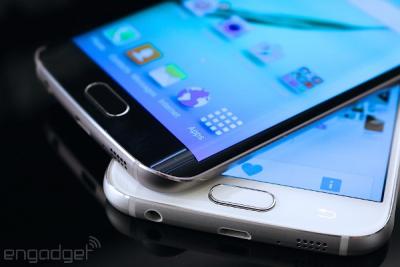
Samsung's Super-AMOLED displays, announced in January 2010, are AMOLED displays with an integrated touch function. In a Super AMOLED display, a touch-sensor is placed over the display (on-cell). The thickness of the touch sensor is just 0.001 mm and this allows the screen to provide better images and to have great visibility even in direct sunlight (Samsung says that they perform 20% better than regular touch AMOLED outdoors).
In 2010 or so, achieving an HD resolution in a mobile phone was a great achievement, and Samsung used to market those displays as Super AMOLED HD or HD Super AMOLED display to make sure people know these are HD displays. Today, as most high-end mobile displays sport Full-HD (or even higher) resolutions, Samsung no longer adds the HD before or after the Super AMOLED.
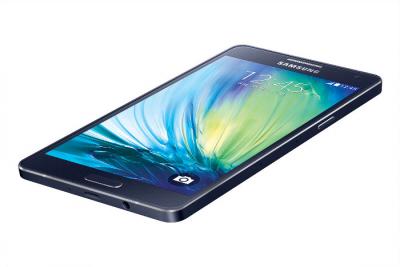
Further reading
The latest Super AMOLED HD news:
Samsung shipped over a million Galaxy Note phones
Samsung announced today that they shipped over a million Galaxy Note phones. The company considers this a great success as they have invented a new market with this phone-tablet hybrid, and the phone isn't shipping in the US yet (Samsung does have plans to introduce it in 2012). It took Samsung about 2 months to sell a million Notes. The Galaxy SII sold over 2 million units in the first 30 days...
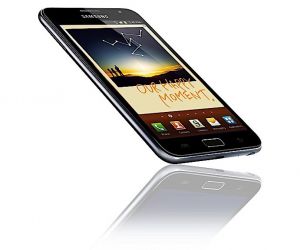
Samsung's Galaxy Note is a large Android v2.3 phone (or mini-tablet?) with a 5.3" Super AMOLED display with an HD resolution: 1280x800. Other specs include a dual-core 1.4Ghz processor, 8mp camera, touch display with pen input (it has a stylus). The phone is 9.65mm thick and weights 178 grams.
Verizon starts selling the Galaxy Nexus for $300
Verizon starts selling the Galaxy Nexus - for $300 with a 2 year plan. The Galaxy Nexus is the first Android v4 (Ice Cream Sandwich) smartphone - made by Samsung. It features a 4.65" HD Super AMOLED display (1280x720, using PenTile technology) with a curved glass, a dual-core 1.2Ghz CPU, Full-HD video encoding, 5nmp camera, NFC, 1GB of RAM and 16/32GB of internal memory.
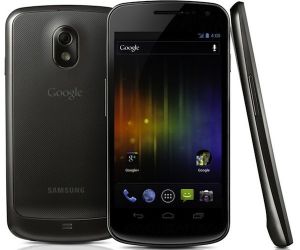
Samsung still uses FMM to fabricate Super AMOLED HD displays
There's an interesting article discussing a team of engineers in Samsung which developed the Super AMOLED HD displays. As was suggested before, Samsung is still using a Shadow Mask (or FMM) to fabricate Super AMOLED HD displays. Using new materials and a new manufacturing process they managed to develop such a fine mask that enabled over 300ppi - a thing that was considered impossible by several companies.
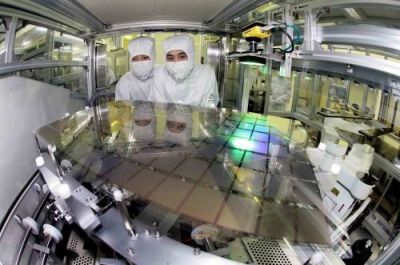
So Samsung didn't move to LITI production yet, and they are still using FMM. Samsung also developed a new technique called Small Mask Scanning (or SMS) will enables them to scale up AMOLED production to 8-Gen plants.
Samsung released the Galaxy Note LTE and Galaxy Nexus LTE phones in Korea
Samsung launched two new phones today for the Korean market - the Galaxy Note LTE and the Galaxy Nexus LTE - and both phones feature Super AMOLED HD displays (with PenTile technology). The Note has a 5.3" Super AMOLED 1280x800 stylus enabled display, a dual-core 1.4Ghz processor and a 8mp camera.
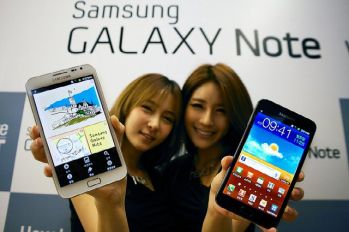
The Galaxy Nexus is the first Android v4 (Ice Cream Sandwich) smartphone with a 4.65" HD Super AMOLED display (1280x720, curved glass), a dual-core 1.2Ghz CPU, Full-HD video encoding, 5mp camera, NFC, 1GB of RAM and 16/32GB of internal memory.
Engadget: the Galaxy Nexus Super AMOLED HD display is amazing, simply beyond par
Engadget posted a review of the Galaxy Nexus - calling it the best Android phone on the market (and perhaps the best phone in the market period). And they love the 4.65" PenTile HD Super AMOLED display, which is "simply beyond par. Gorgeous doesn't even begin to describe this screen -- try amazing, jaw-dropping, mind-boggling... fonts are crisp, colors are vibrant, blacks are deep and viewing angles are exceptional... the writing's on the wall: Super AMOLED is brilliant, and it's only getting better.

The Galaxy Nexus is the first Android v4 (Ice Cream Sandwich) smartphone - made by Samsung. It features a 4.65" HD Super AMOLED display (1280x720, using PenTile technology) with a curved glass, a dual-core 1.2Ghz CPU, Full-HD video encoding, 5nmp camera, NFC, 1GB of RAM and 16/32GB of internal memory. The phone is now shipping in the UK (with a contract). It will be available sim-free on December 2nd, for £519 (you can pre-order now). You can buy it unlocked in the US for $879.
The Galaxy Nexus now shipping in the UK
Samsung's Galaxy Nexus is now shipping in the UK (with a contract). It will be available sim-free on December 2nd, for £519 (you can pre-order now). The Galaxy Nexus is the first Android v4 (Ice Cream Sandwich) smartphone. It features a 4.65" HD Super AMOLED display (1280x720, using PenTile technology) with a curved glass, a dual-core 1.2Ghz CPU, Full-HD video encoding, 5nmp camera, NFC, 1GB of RAM and 16/32GB of internal memory.

The Samsung Note is available unlocked in the US for $849.99
Amazon.com are now offering the Samsung Note unlocked for $849.99, probably shipped from Europe. The Galaxy Note is a large Android v2.3 phone/mini-tablet with a 5.3" Super AMOLED display with an HD resolution: 1280x800 (a Super AMOLED HD display). Other specs include a dual-core 1.4Ghz processor, 8mp camera, touch display with pen input (it has a stylus). The phone is 9.65mm thick and weights 178 grams.
The Galaxy Note's 5.3" HD Super AMOLED display "is as gorgeous as it is enormous"
Engadget posted a review of Samsung's Galaxy Note, and they say that "the 5.3" HD Super AMOLED display is as gorgeous as it is enormous...1280 x 800 pixels in a smartphone display is quite a feat, and it's just as impressive to behold as it sounds. The Note's 5.3-inch Super AMOLED screen is incredibly bright, vibrant and detailed, thanks to its 285ppi resolution... colors on the Note pop just as they do on the GS II, that eye-pleasing contrast and saturation we've come to love from Samsung's AMOLED displays, and little vibrancy is lost when viewed from the side. However, color accuracy does start to wander a bit. This is indeed a PenTile display and so there are more green sub-pixels than any other color. This gives everything an ever-so slightly sickly tinge, especially when viewed off-angle..."

Samsung's Galaxy Note is a large Android v2.3 phone (or mini-tablet?) with a 5.3" Super AMOLED display with an HD resolution: 1280x800. Other specs include a dual-core 1.4Ghz processor, 8mp camera, touch display with pen input (it has a stylus). The phone is 9.65mm thick and weights 178 grams. The note is now shipping in Europe (£592 in the UK, without a contract).
Something big (and curved) is coming from Samsung...
Update 2: The Galaxy Nexus is now official - with a 4.65" Super AMOLED HD display. It isn't curved though as we hoped...
Update: Samsung and Google announced they are delaying the announcement of the new product. They said that this is not the right time "as the world expresses tribute to Steve Jobs's passing"
Samsung is hosting an event on October 11th (during the CTIA Enterprise & Applications show in San Diego) - apparantly together with Google. They released a short teaser that towards the end shows a mysterious curved device:
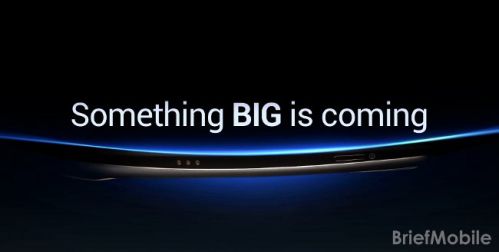
There are speculations that this is the next Google phone (perhaps called Nexus Prime) - that will include a curved Super AMOLED HD display. We don't have a lot to wait for this one! Hopefully they won't fail us like Apple just did yesterday. Here's the full (30 seconds) teaser video:
On Samsung's and LGD's OLED production scaling methods
Update: according to new reports, the OLED-A was wrong and Samsung are still using a Shadow-Mask to fabricate Super AMOLED HD displays
The OLED Association published a very interesting paper discussing Samsung's and LG Display's efforts to scale OLED production to large size panels (specifically 55" OLED TVs). In the article, they say that Samsung will use an LTPS substrate with a SMS (Small Mask Scanning) method, while LGD plans to use an Oxide TFT and Kodak's White OLED with color filters architecture. We already reported about Samsung's SMS method a few weeks ago.

The article includes a very interesting comparison of the different deposition methods (FMM, LITI, SMS, Printing and LG's RGBW). They also claim that the new display in the Samsung Galaxy II LTE HD was produced using LITI.
Pagination
- Previous page
- Page 5
- Next page



